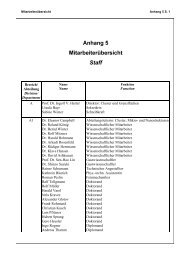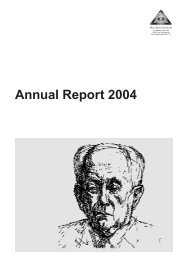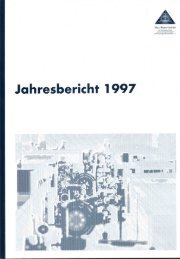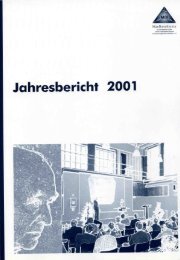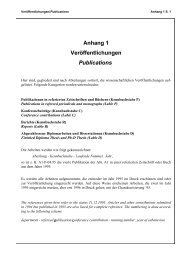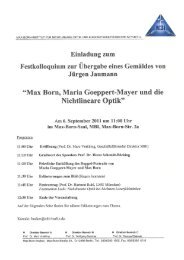Create successful ePaper yourself
Turn your PDF publications into a flip-book with our unique Google optimized e-Paper software.
strength of the light emission. In a real experiment, many atoms would contribute in synchronism<br />
and so the light emission would be much more intense. The signal shown in this figure<br />
was calculated for the 6 fs pulse shown on the right. It has a central wavelength of 1.6 µm and<br />
an intensity of 10 14 W/cm 2 . The figure plots the results for wave packets with periods of 390,<br />
330 and 444 attoseconds.<br />
Prominent on each figure are periodic modulations of the light emission. It is possible to show<br />
that the maxima appear when the two wave packets co-propagate. The minima appear when<br />
they counter-propagate. Therefore a single image measures the wave packet motion [14].<br />
Before concluding, I would like to generalize what I have said so far. We have concentrated on<br />
how the re-collision electron “sees” its former self by splitting and interfering with itself. But we<br />
do not know which path the electron took and when we observe the photon produced by this<br />
interference, we destroy any possibility of measuring it.<br />
What would happen if we looked directly at the electron? The information that we could retrieve<br />
would be very different – but no less interesting. In that case we would know that the electron<br />
could not have interfered with itself, because we would know that the molecule either has, or<br />
has not ionized. Instead, the ionized electron re-collides with the ion it had left. During that<br />
re-collision, the electron can diffract [15, 16]: The diffraction pattern tells us where the atoms<br />
that make up the molecule were at the time of re-collision. Laser-induced electron diffraction<br />
gives complementary information to orbital tomography. We image the atoms of the molecule<br />
by diffraction and the electrons by tomography.<br />
There have been many important science developments since the introduction of quantum<br />
mechanics. The laser, discovered about 40 years later, is an essential tool today. It allows us to<br />
reach into the quantum world with precision. We have used the fact that lasers control electric<br />
fields that are as strong as, or stronger than, the fields that bind electron to atoms. These<br />
strong fields can make an electron beam splitter and the delay arm in an electron interferometer.<br />
Laser science now allows electric fields to be controlled with sub-cycle precision – control<br />
that we can use to fabricate attosecond pulses and to take attosecond-molecular images.<br />
So, just as quantum mechanics relied on the scientific developments that preceded it, attosecond<br />
science also relies on its preceding science. Future generations will judge how important<br />
attosecond science will be. I will be very happy if the 21 st century science that I have described<br />
here has even a fraction of the impact on future directions of science that <strong>Max</strong> <strong>Born</strong>’s science<br />
has had. (Of course, I will not know.)<br />
Fig. 13<br />
The measured spectrum<br />
of the high harmonics<br />
produced by a nitrogen<br />
molecule normalized by<br />
the spectrum of argon.<br />
Other ways the re-collision<br />
electron can “see”<br />
a molecule<br />
Conclusion<br />
<strong>Max</strong> <strong>Born</strong> • Paul Corkum 43



